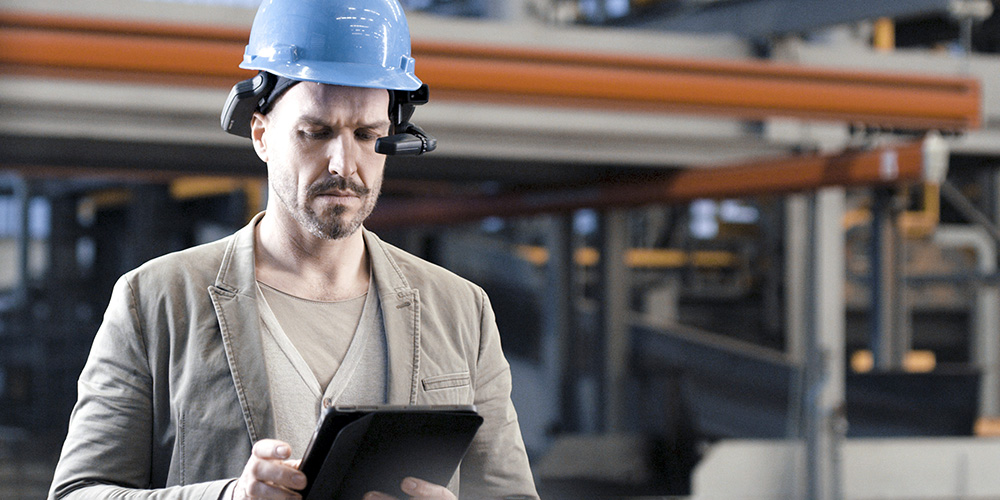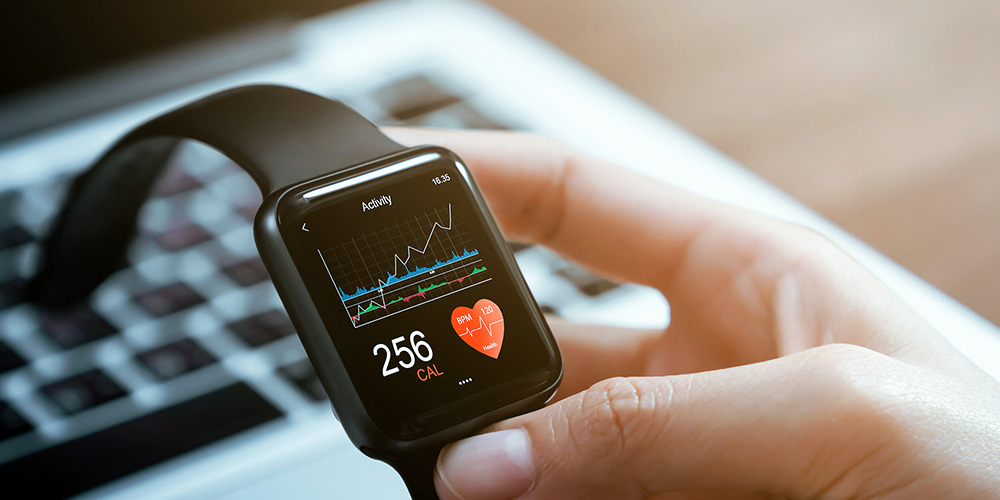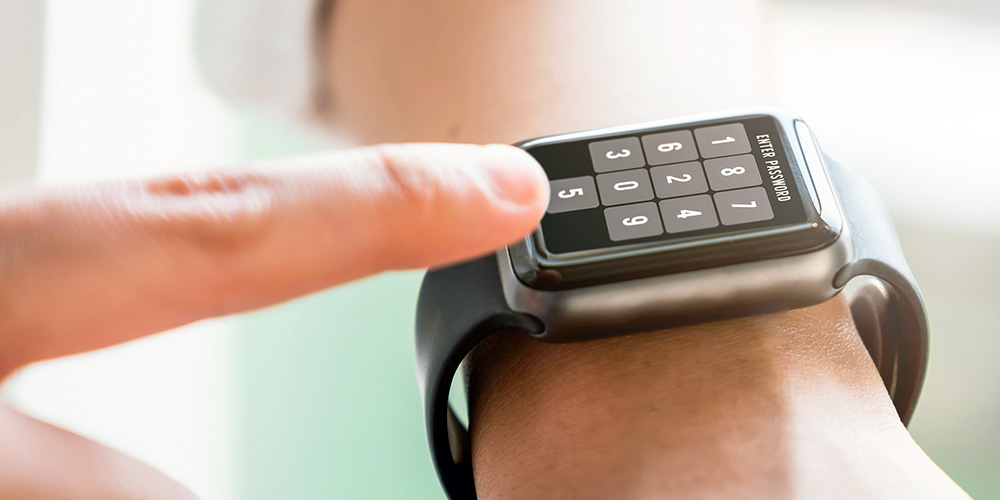
Beginner's guide to: The pros and cons of wearable technology
Developments in wearable technology are expanding adoption. In this guide we examine some of the primary pros and cons associated with wearable tech.
09 February 2022
Wearable technology, commonly referred to as wearables, are usually small electronic devices worn somewhere on your body such as watches, wristbands and can even be embedded into clothing. You can do lots of different things with this type of technology including: listening to music, keeping tabs on your health and wellbeing and staying connected on the go.
If you’re thinking about getting your hands on some wearable tech, you might be wondering what the pros and cons could be. Keep reading to find out some of the benefits of wearable tech and what risks you could face.
What is wearable technology?
Wearables are considered Internet of Things (IoT) devices as they fit into the description of physical objects that are embedded with sensors, software and other technologies that connect and exchange data with other devices and systems over the internet or other communications networks.
There are various types of wearable devices out there, including:
- Smartwatches: worn on the wrist like a traditional watch, smartwatches are an extension of your smartphone using a touchscreen enabling you to do many of the things you can on your phone including reading emails, answer calls and listen to music
- Fitness trackers: usually worn on the wrist, these can vary widely in their functionality from basic step counters to measuring distance travelled, calorie counting and heart rate monitoring
- Head mounted displays: wearable tech that’s worn on your head, including goggles and glasses that help you see things in your peripheral vision easier, or swimmers to see their heart rate without having to stop and look at their watch. Smart hard hats are being developed to improve safety for construction workers
- Health related: there are a variety of trackers available for specific health needs including fertility tracking and sleep monitoring
- Smart jewellery: choose from necklaces, rings and bracelets to help you monitor things like heart rate and steps. The smart jewellery market isn’t quite as advanced as smartwatches but it’s catching up, as more people want to track their activities without wearing sporty looking devices
- Smart clothing: the smart clothing industry is growing rapidly, you can listen to your music and messages through your hat, your socks can track your heart rate, count your steps and give you information about how your feet land, and your yoga leggings can give you instructions on how to nail your downward dog
- Implantable devices: wearables can even be implanted under your skin, microchips could help replace the need for keys and passwords using NFC or RFID technology, and pacemakers can help support heart health.
History of wearable technology
Wearable technology has been around for longer than you might have thought. Back in the 1970s the first calculator wrist-watch was developed to help you do sums on the go, as well as tell you the time, and in 1979 the first portable cassette tape player was created by Sony known as the Walkman. Wearable technology started a trend that shows no sign of slowing down anytime soon.

How wearable technology works
Wearable technology collects, transmits and processes data from the wearer using sensors and microprocessors to exchange data with other devices. They’re used to track information on a real time basis, taking snapshots of your day to day activities and syncing them with your mobile device or computer.
Wearable devices collect different types of data in different ways depending on the purpose of your tech. Smart watches and fitness trackers make use of built in accelerometers and GPS sensors to track activities calculating things like distance travelled if you’ve gone for a run or walk, how fast you went and how many calories you’ve burned off. Some wearable tech has the ability to measure outside temperature and the wearers core temperature too. You can usually add information manually as well; like what you’ve eaten or drank, or how much you weigh.
You can find out more about how wearable technology works in our smart technology learning programme.
Pros of wearable technology
Wearable technology already provides many benefits to wearers, from tracking your daily movements to notifying you of your next appointment, but that’s not all. Let’s take a closer look at some of the great things wearable tech can help us with:

1. Wearable technology supports healthcare
Regardless of age or gender wearable tech can help monitor your health more easily.
In addition to lots of the features that come as standard on some wearable tech such as heart rate, stress and sleep levels, you can also get specific healthcare wearable technology too.
If you’ve got concerns about your heart health, wearable heart rate monitors might be able to help you to monitor things like heart rate irregularities, so that your healthcare provider can support any treatment plans. You can even get implantable wearable tech for your heart too if you need it. Pacemakers and implantable cardioverter defibrillators (ICDs) are designed to monitor and help control heart rate, and could even help restart your heart if it stops working properly.
Wearable technology is being developed to help sufferers of specific chronic diseases. For example, there are devices that can help with the monitoring of Parkinson’s disease patients between doctors’ visits. Watch-like devices are worn to provide lots of useful information to the specialist, who can use these findings to help manage what care individuals with Parkinson’s might require. They also have the ability to alert the wearer to take their medication.
If you have any health concerns that you think could be monitored better with technology, always seek advice from a qualified medical professional first.
2. Wearable technology is easy to use
Although wearable technology has been around for decades, today devices are much easier to integrate. They’re lighter, smarter and more comfortable than ever to wear. They’re also easy to setup, as most devices either seamlessly integrate with your smart phone or work independently. Most wearables, if not all, offer easy portability and increased user friendliness.
3. Wearable technology is great for older people
Getting older can increase the risk of failing health and chances of slips and trips. It’s hard not to worry about your loved ones if they live alone. People on their own, especially older people, could find that using wearable technology not only gives them added independence, but can also give their families the reassurance that they can get help quickly if they need it.
There are a variety of different wearables that could help more vulnerable people, and these include things like medical alert systems with built in fall detection that automatically contacts the emergency services if necessary.
Most smart watches have features to provide reminders and even voice commands to set alarms for important times such as when to take medication. You can even get devices with larger screens and simple controls for people with visual or dexterity impairments.

4. Wearable technology increases productivity
Wearable technology could help to increase your productivity. Using things like voice commands to set reminders, dictate notes and even make lists all hands free can save you loads of time.
They’re also able to reduce distractions and improve communication by being able to glance at your wearable to see your schedule instead of having to take your phone out of your pocket or log onto desktop applications to check. You can avoid distractions too by being selective about what notifications come through to your wearable tech.
5. Wearable technology encourages fitness in the workplace – and at home
Using wearables to track fitness goals can be very beneficial for your wellbeing. The data collected from your wearable device can encourage you and your colleagues to exercise more and promote a bit of healthy competition. Lots of organisations have wellness programs for to you to sync your progress to. If your workplace doesn’t have one, you could challenge your work colleagues, or even friends and family using a variety of different fitness apps.
6. Wearable technology supports safe working practices
Wearable tech can help with safe working practices, they can be used to monitor worker fatigue and notify you to take a break.
You can also have ‘smart’ personal protective equipment; glasses with heads up displays and hard hats with sensors. It gives employees a set of watchful eyes to ensure the health and wellbeing of the workforce.

Cons of wearable technology
As with most things, it’s always worth doing your research to find out what the risks could be before making a purchase. Wearable tech collects personal data, so it’s a good idea to know what your wearable tech is capable off, how to take care of it properly, and how to keep your data safe. Let’s take a closer look at some of the concerns:

1. Data security concerns
Your smartphone could just be used as a fashion accessory, but many of us are using them as an extension to our smartphones – they can let us view text messages, read emails, and even make payments if you’ve enabled it to do so.
Your smart watch will have come with a privacy policy, so before you start using it, make sure you’re familiar with the terms and conditions and check if your data is going to be shared elsewhere.
Wearables collect personal data and connect to the internet, so it’s worth checking what security features are available so you can make sure that your personal information doesn’t get into the wrong hands. Double check the permissions you’ve allowed on your device, and make sure you update the software when recommended to keep any security features up to date.
2. Technical concerns
All wearables need a power supply and most, if not all, are provided in the form of a battery. Kinetic energy (power created through the wearer themselves to then power the wearable) is still a way off, but battery technology is growing, as is the need for devices to last longer. Users want their devices to be easy and quick to charge, and to hold their charge for longer periods of time too. Having better quality batteries, that are still compact enough to make the wearable lightweight and comfortable usually has an impact of the price of the device.
3. Capabilities are limited
Functionality of wearable devices is often compared to the functions available on smartphones. What you’ll find on most wearables is the smaller screen sizes you have compared to that of a smartphone, although this is being expanded and products like the Apple Watch are starting to increase their screen sizes with every new model release. It’s also worth noting that some wearables will need a smartphone to be able to work.
4. Wearable technology is expensive
Current available wearables can be relatively expensive. Although as the popularity of wearable technology such as fitness trackers continues to increase, more competition is creeping into the market. Consumers have a more varied choice in price and functionality of wearable devices giving more of us the opportunity to purchase a wearable device in a price bracket that suits us.
As the technology supporting wearables becomes cheaper, we’re likely to see the arrival of highly powerful, very affordable wearable devices in the not too distant future.
The pros and cons of wearable technology are quite widespread but there are more positive aspects to using wearables than there are negative. Over time the negative aspects will only get better as it becomes more popular and adapted.

